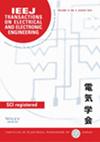求助PDF
{"title":"Forecasting and Assessing Water Demand and Rice Production in An Giang Province in 2024 by Using the CROPWAT and ORYZA Models†","authors":"Nguyen Duc Anh, Vo Luong Hong Phuoc","doi":"10.1002/tee.70151","DOIUrl":null,"url":null,"abstract":"<p>In early 2024, the Mekong Delta in Vietnam faced significant saltwater intrusion, exceeding average levels. Between February and March, the region experienced three periods of increased saltwater intrusion, primarily driven by the El Niño phenomenon, which resulted in a striking lack of rainfall (60%–95% below normal levels). Extended sunny days led to considerable evaporation from fields, canals, rivers, and lakes. Concurrently, reduced upstream water flow into the Delta and heightened spring tide levels pushed saltwater deeper into rice fields, severely impacting local livelihoods and agriculture. To address this issue, the study aims to predict evapotranspiration and water demand using the CROPWAT 8.0 model in combination with simulating the growth and development of rice crops in An Giang province by utilizing the ORYZA model. This research will focus on the three main rice growing seasons: Winter–Spring, Summer-Autumn, and Autumn-Winter, utilizing a rice variety with a growth duration of 95–100 days. Forecasts for 2024 will rely on drought data from 2019, projecting continuous high temperatures (0.5 °C above 2019 levels) and no rainfall from January to May in 2024. It can be seen that agricultural activities in 2024, particularly during the Summer-Autumn season, could face severe consequences. © 2025 Institute of Electrical Engineers of Japan and Wiley Periodicals LLC.</p>","PeriodicalId":13435,"journal":{"name":"IEEJ Transactions on Electrical and Electronic Engineering","volume":"20 11","pages":"1921-1926"},"PeriodicalIF":1.1000,"publicationDate":"2025-09-18","publicationTypes":"Journal Article","fieldsOfStudy":null,"isOpenAccess":false,"openAccessPdf":"","citationCount":"0","resultStr":null,"platform":"Semanticscholar","paperid":null,"PeriodicalName":"IEEJ Transactions on Electrical and Electronic Engineering","FirstCategoryId":"5","ListUrlMain":"https://onlinelibrary.wiley.com/doi/10.1002/tee.70151","RegionNum":4,"RegionCategory":"工程技术","ArticlePicture":[],"TitleCN":null,"AbstractTextCN":null,"PMCID":null,"EPubDate":"","PubModel":"","JCR":"Q4","JCRName":"ENGINEERING, ELECTRICAL & ELECTRONIC","Score":null,"Total":0}
引用次数: 0
引用
批量引用
Abstract
In early 2024, the Mekong Delta in Vietnam faced significant saltwater intrusion, exceeding average levels. Between February and March, the region experienced three periods of increased saltwater intrusion, primarily driven by the El Niño phenomenon, which resulted in a striking lack of rainfall (60%–95% below normal levels). Extended sunny days led to considerable evaporation from fields, canals, rivers, and lakes. Concurrently, reduced upstream water flow into the Delta and heightened spring tide levels pushed saltwater deeper into rice fields, severely impacting local livelihoods and agriculture. To address this issue, the study aims to predict evapotranspiration and water demand using the CROPWAT 8.0 model in combination with simulating the growth and development of rice crops in An Giang province by utilizing the ORYZA model. This research will focus on the three main rice growing seasons: Winter–Spring, Summer-Autumn, and Autumn-Winter, utilizing a rice variety with a growth duration of 95–100 days. Forecasts for 2024 will rely on drought data from 2019, projecting continuous high temperatures (0.5 °C above 2019 levels) and no rainfall from January to May in 2024. It can be seen that agricultural activities in 2024, particularly during the Summer-Autumn season, could face severe consequences. © 2025 Institute of Electrical Engineers of Japan and Wiley Periodicals LLC.
基于crowat和ORYZA模型的2024年安江省需水量与水稻产量预测与评价[j]
在2024年初,越南的湄公河三角洲面临严重的盐水入侵,超过了平均水平。在2月至3月期间,该地区经历了三次盐水入侵增加的时期,主要是由厄尔尼诺Niño现象造成的,这导致降雨量严重不足(比正常水平低60%-95%)。长时间的晴天导致农田、运河、河流和湖泊的大量蒸发。与此同时,流入三角洲的上游水量减少,大潮水位上升,使海水更深地渗入稻田,严重影响了当地的生计和农业。为解决这一问题,本研究拟利用CROPWAT 8.0模型,结合ORYZA模型对安江省水稻作物生长发育进行模拟,预测作物的蒸散量和需水量。本研究将集中在三个主要的水稻生长季节:冬春、夏秋和秋冬,利用一个生长周期为95-100天的水稻品种。2024年的预测将依赖于2019年的干旱数据,预计2024年1月至5月将持续高温(比2019年高出0.5℃),无降雨。可以看出,2024年的农业活动,特别是夏秋季节的农业活动可能面临严重后果。©2025日本电气工程师协会和Wiley期刊有限责任公司。
本文章由计算机程序翻译,如有差异,请以英文原文为准。


 求助内容:
求助内容: 应助结果提醒方式:
应助结果提醒方式:


